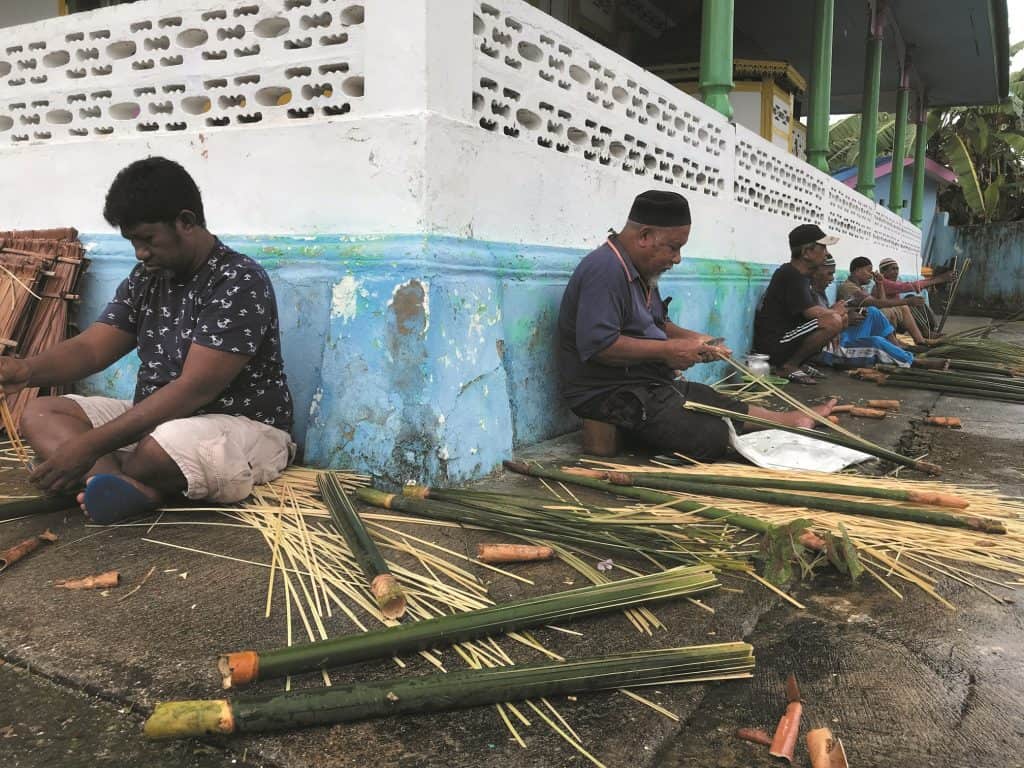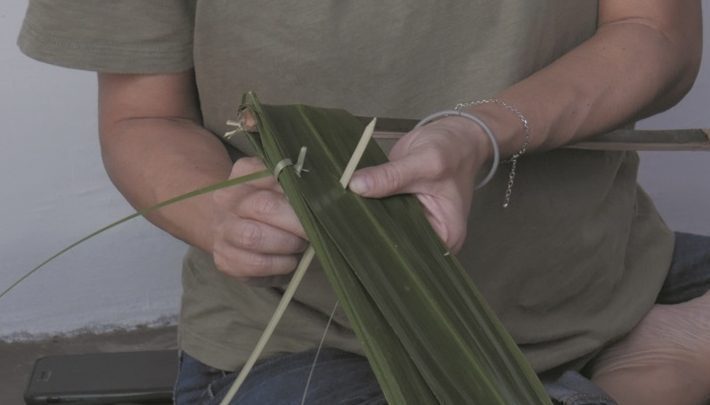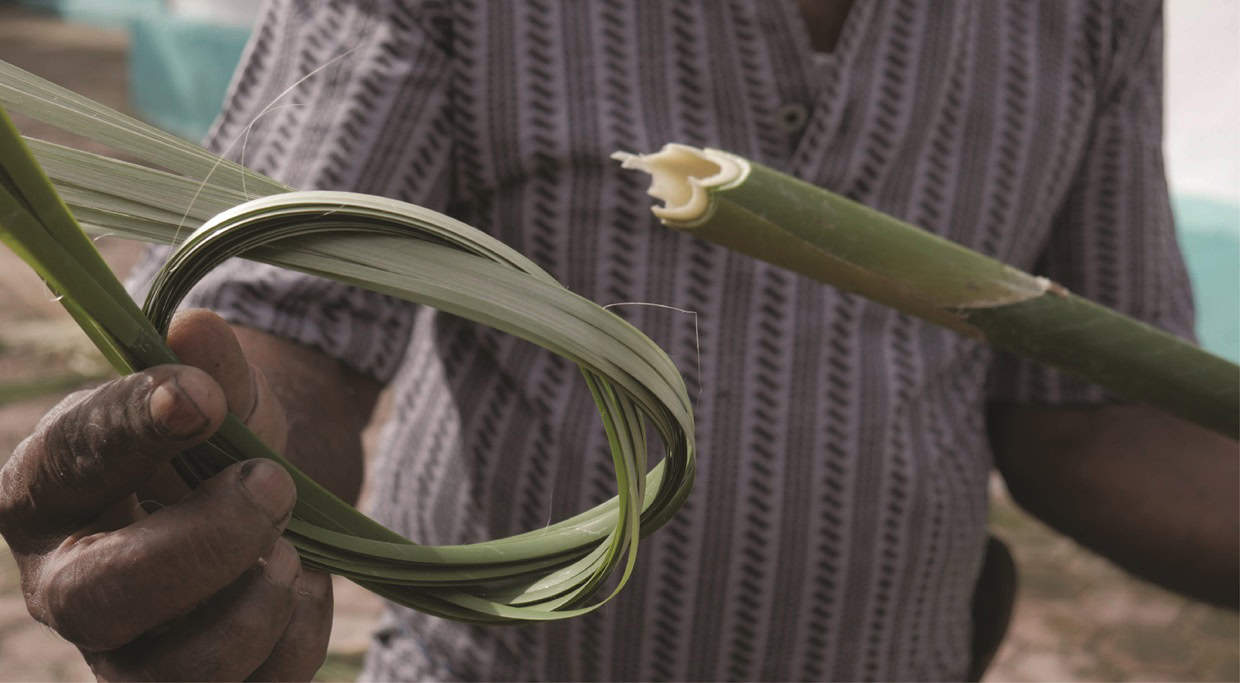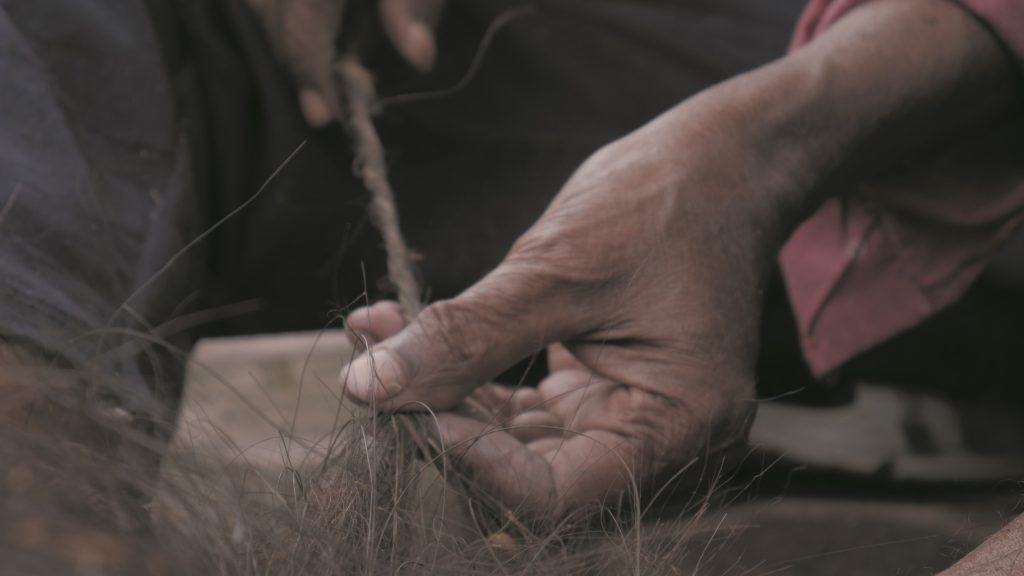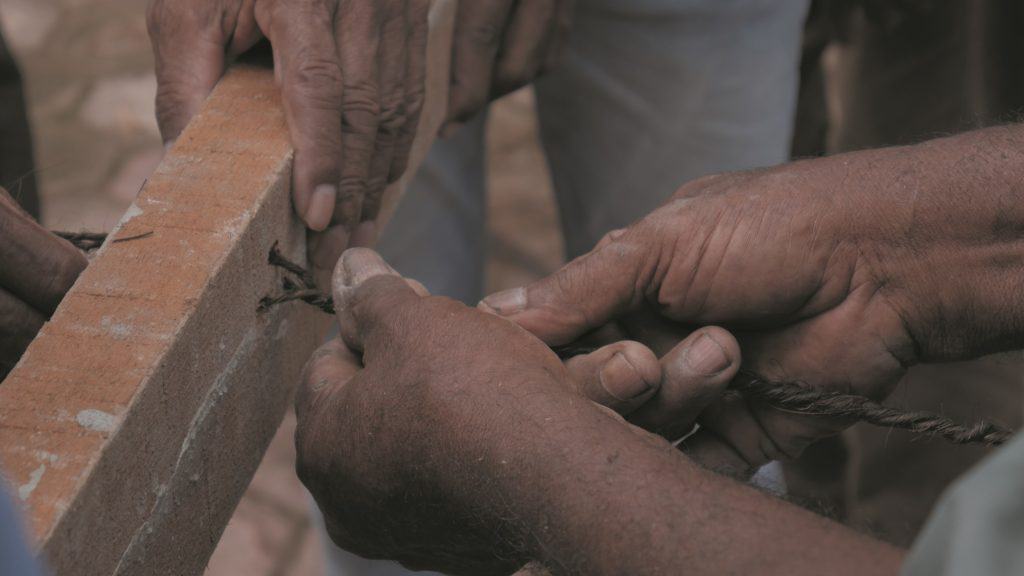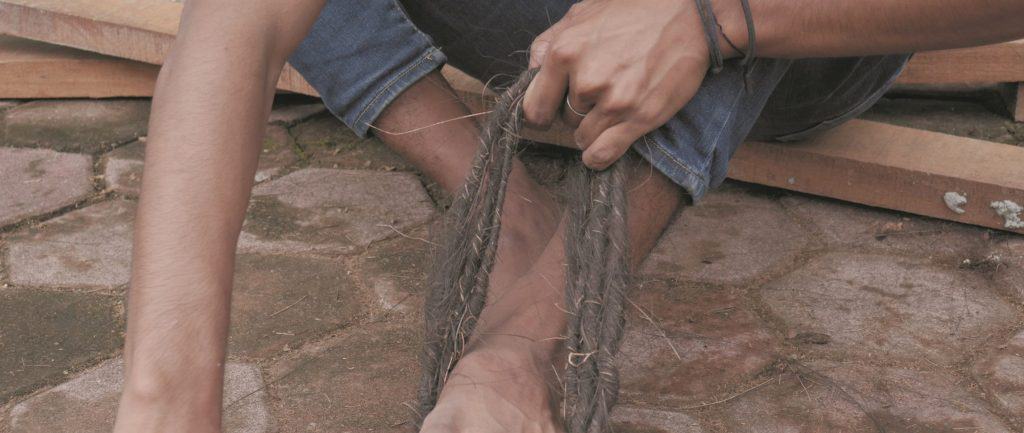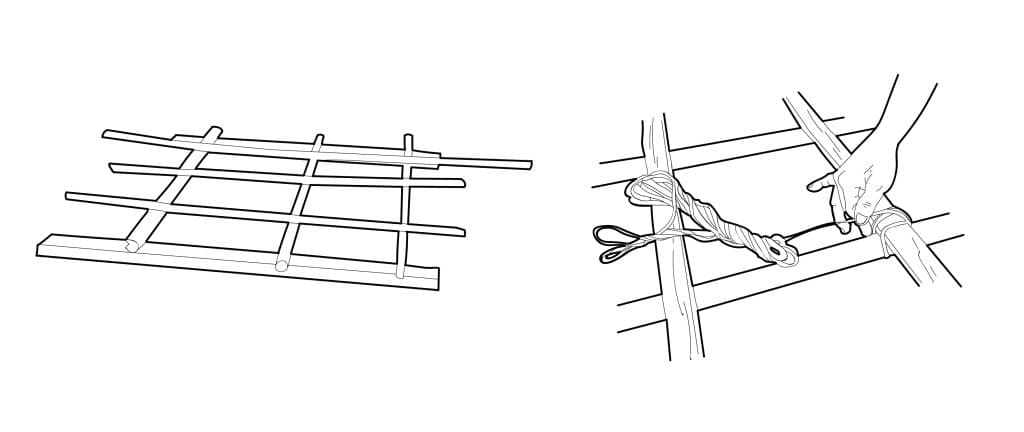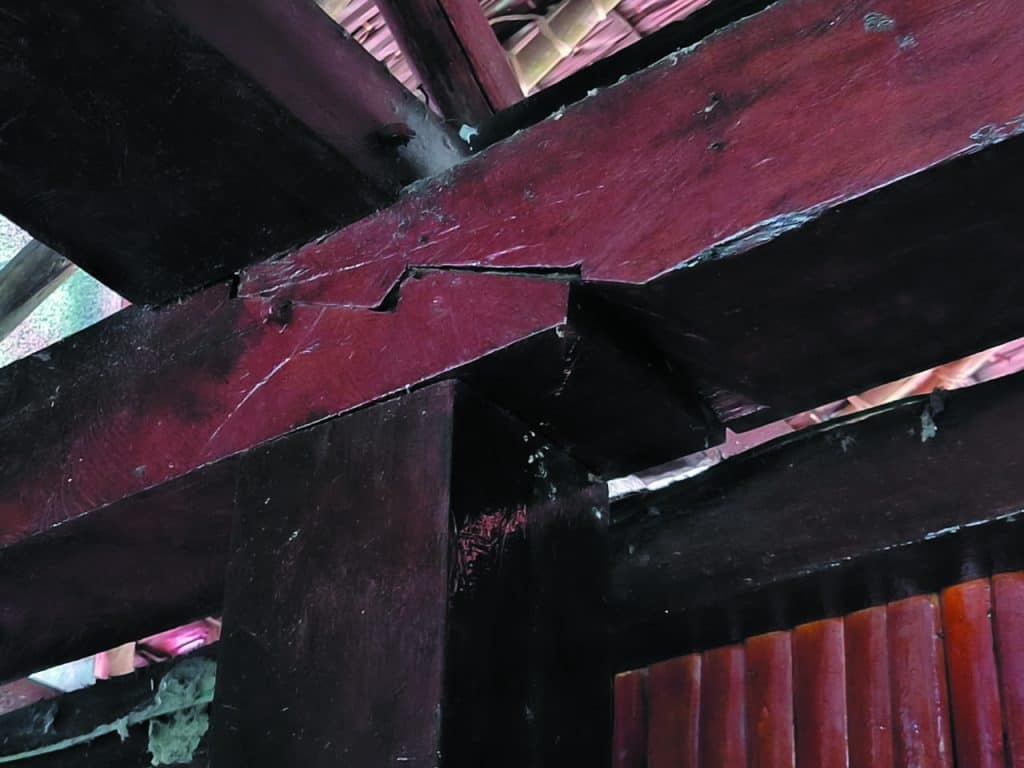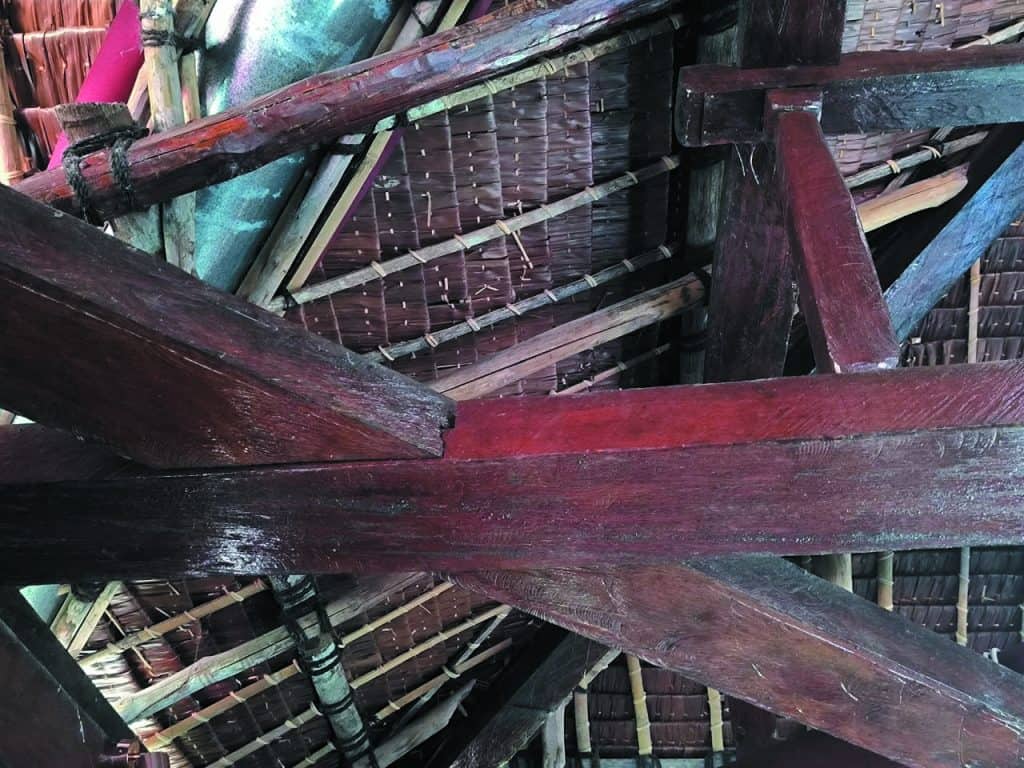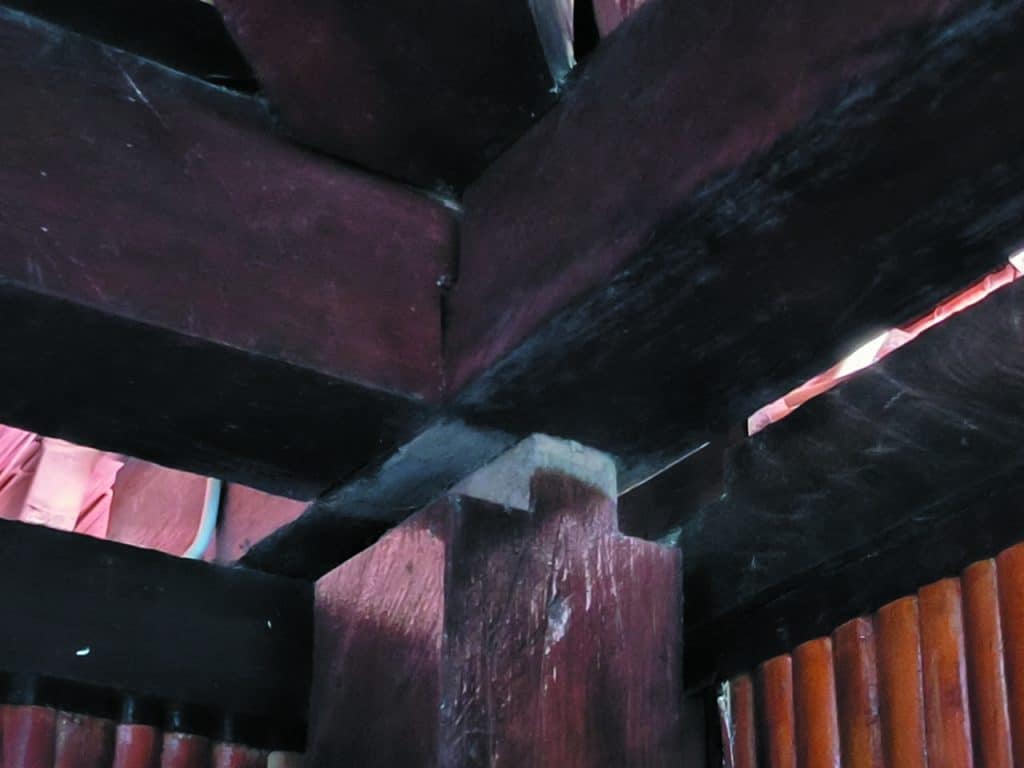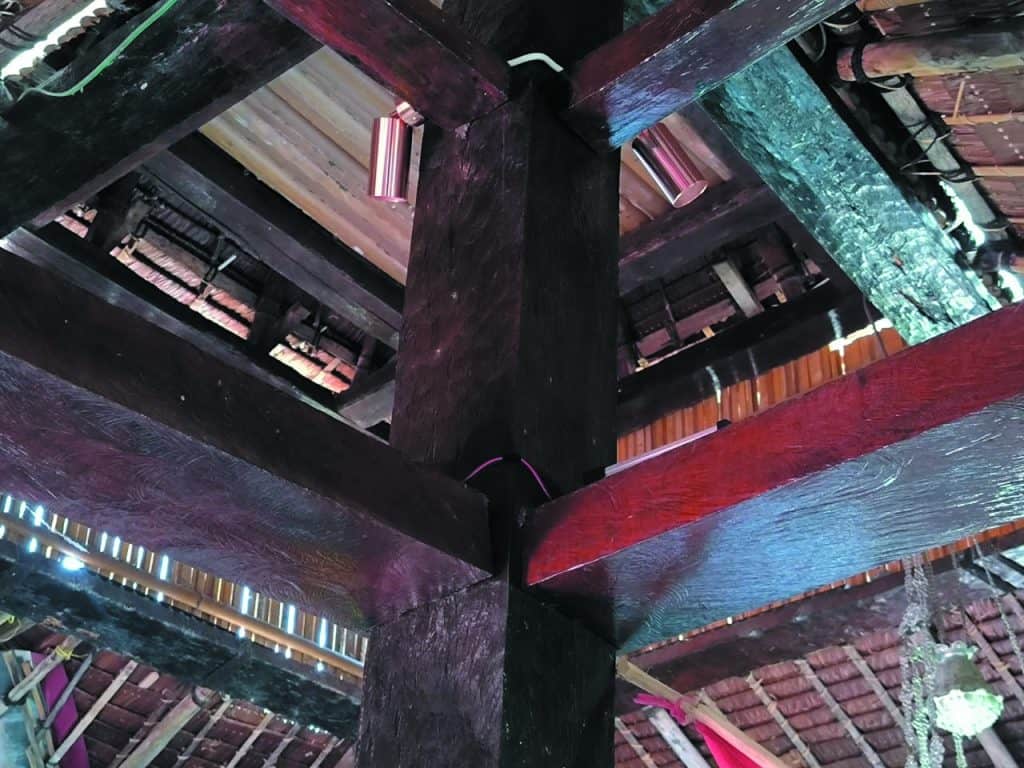Gamutu is the word used in Maluku for strings or cords made of the coarse black fibers from the petioles (leaf stems) of the aren palm or palm (Arenga pinnata), a tree native to Southeast Asia. These strong and flexible fibers make durable and resistant ropes for all sorts of constructions, including boat construction. Also called ijuk (black in Indonesian), they are also used in the fabrication of mats, brushes, brooms, and various other products.
Two craftsmen are needed to make gamutu strings and ropes, one seated, the other standing behind him with a cross-shaped wooden manual spinning tool. Before spinning a gamutu yarn, the craftsmen separate the thickest fibres from a pile of tangled fibres held to the ground by the seated spinner with his feet. The softer raw fibers are ready to be spun. The seated craftsman then twists and winds the fibers into a thin continuous strand.
Behind him, the second craftsman pulls this strand and rolls it up manually into a ball around the cross-shaped wooden instrument with a handle. To make a stronger rope, the yarn can be thickened by twisting multiple single-ply yarns into a double or triple-ply using a wooden block drilled with two to three holes.



